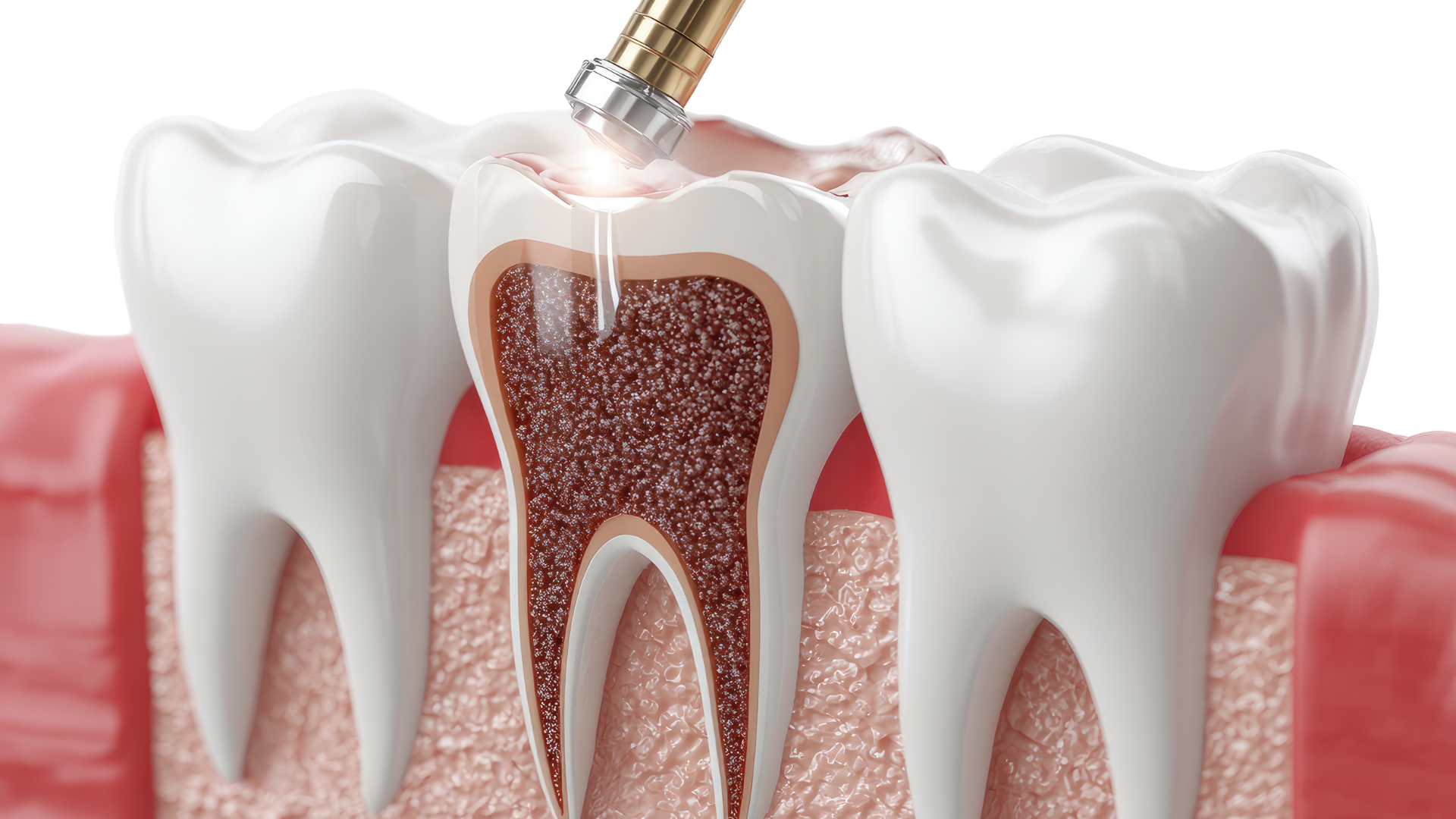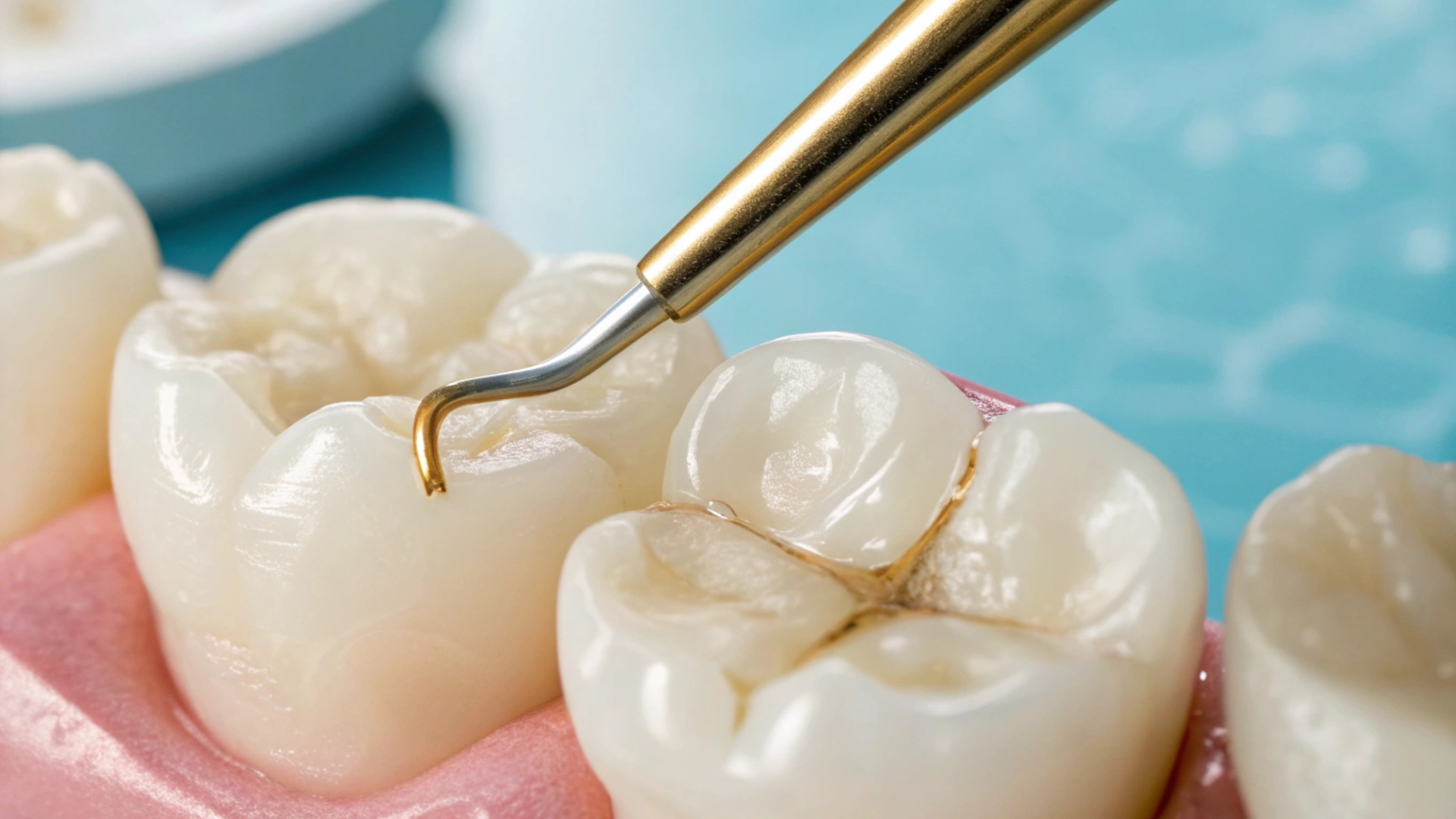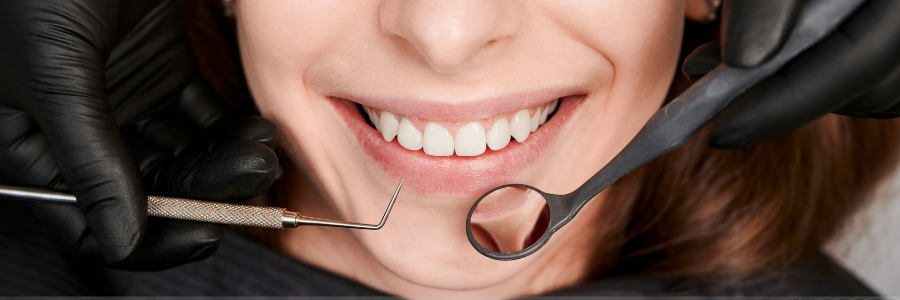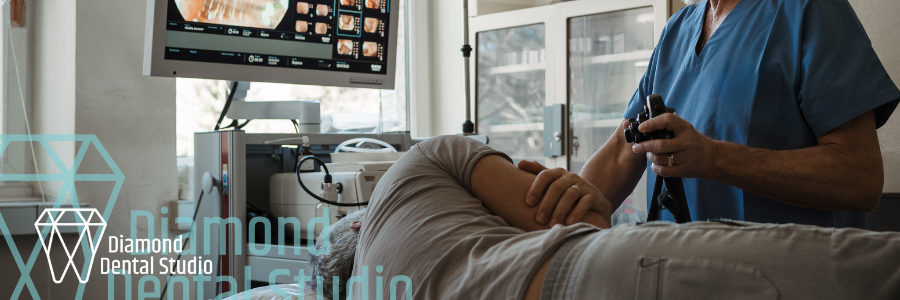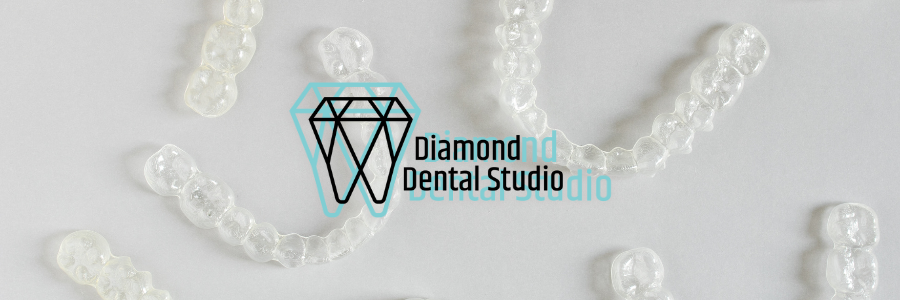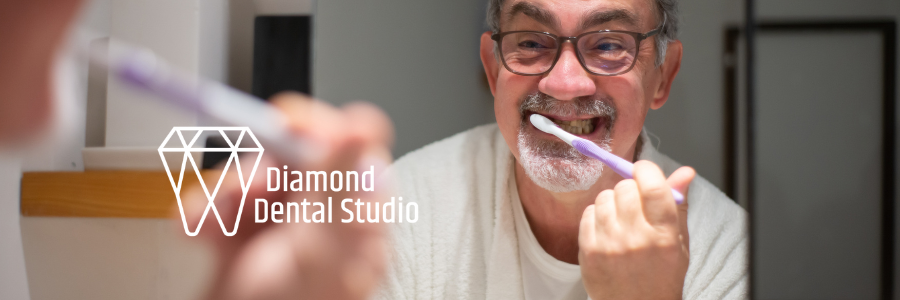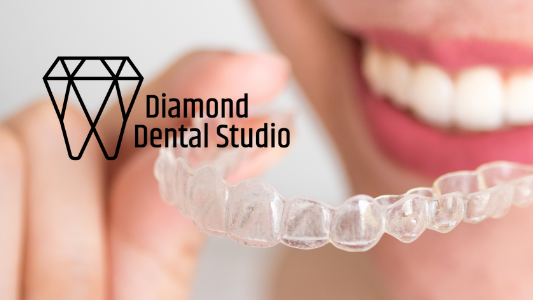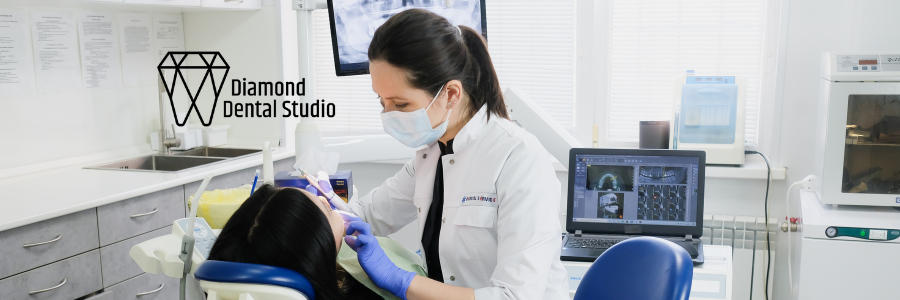Discover: How Long Does Teeth Whitening Take?
Understanding the Laser Teeth Whitening Process
Procedure Duration for Laser Teeth Whitening

The journey to a brighter smile through laser teeth whitening is both swift and efficient.
A typical session can range from 30 to 90 minutes
, depending on various factors such as the initial tooth color, stain severity, and the whitening level desired. The process involves the application of a bleaching gel, which is then activated by laser light to expedite the whitening effect.
The convenience of laser teeth whitening lies in its ability to deliver significant results in just a single session. While the duration of the session is relatively short, the outcomes can be quite impressive, offering a transformation that can last for months or even up to three years with proper maintenance.
For those considering this cosmetic procedure, here's a quick overview of what to expect:
It's important to note that while the procedure is generally painless, some individuals may experience minimal sensitivity following the treatment. Nevertheless, the procedure is safe when performed by a qualified professional, and the results are long-lasting, making it a worthwhile investment for many.
When considering teeth whitening options, laser whitening stands out for its speed and efficiency . Unlike traditional bleaching methods that rely on chemical agents and may require multiple applications, laser whitening typically achieves significant results in just one session. This makes it an attractive option for those with busy lifestyles seeking immediate improvements.
However, it's important to weigh the pros and cons of each method:
The choice between laser whitening and other methods ultimately depends on individual needs, preferences, and dental health.
While laser whitening is convenient and fast, it may come at a higher cost and requires professional supervision. Some patients may experience temporary tooth sensitivity post-treatment. In contrast, bleaching can be more affordable but might necessitate patience and a higher tolerance for potential sensitivity.
When considering laser teeth whitening, it's important to understand the safety measures and comfort provisions in place to ensure a positive experience. The procedure is generally safe, but like any dental treatment, it comes with potential side effects. Most commonly, patients may experience increased tooth sensitivity and gum irritation, which are typically temporary and manageable.
To protect against these side effects, dentists employ several precautionary steps:
Ensuring patient comfort and safety is paramount, and dental teams are highly trained to provide care that minimizes risks and maximizes patient well-being.
If you have concerns about the procedure, it's crucial to communicate with your dentist. They can provide guidance on how to manage any discomfort and tailor the treatment to your needs. Remember, a brighter smile should never come at the cost of your oral health.
The duration of teeth whitening results is not set in stone and can be influenced by several factors. It's important to understand that while teeth whitening can significantly brighten your smile, the effects are not permanent. Maintenance is key to prolonging the whiteness of your teeth.
By adhering to a good oral hygiene routine and being mindful of lifestyle choices, you can extend the life of your teeth whitening treatment. Regular touch-ups can also help maintain your desired level of brightness.
To ensure the longevity of your teeth whitening results, a consistent and diligent home care routine is crucial. Avoiding substances that can stain your teeth , such as coffee, tea, red wine, and tobacco products, is one of the most effective strategies. Regular oral hygiene practices, including brushing twice a day with a whitening toothpaste and flossing daily, are essential to maintain your bright smile.
By adhering to a tailored maintenance plan, you can extend the life of your whitening results significantly. This may involve using specialized products like Zoom! Whitening Toothpaste and touch-up treatments with professional-grade whitening gels.
Here are some additional tips to keep your teeth looking their best:
Remember, the key to prolonged whiteness lies in the balance between professional care and your daily oral hygiene routine.
While professional teeth whitening delivers significant results, it's not a permanent solution. To maintain a dazzling smile , periodic touch-up sessions are recommended. These sessions are typically shorter than the initial treatment, often taking about 30 minutes.
Factors such as dietary habits, oral hygiene, and smoking can affect the longevity of your whitening results. To determine the optimal frequency for touch-ups, consider the following points:
For those who have undergone cosmetic or restorative treatments, touch-ups can complement the overall aesthetic of your smile. It's advisable to schedule a consultation with your dentist to assess the condition of your teeth and to tailor a whitening maintenance plan that suits your needs.
Remember, a touch-up is an investment in the sustained beauty of your smile. Regular maintenance can help prolong the effects of the initial whitening session and keep your teeth looking their best.
When it comes to brightening your smile, the choice between at-home whitening kits and professional in-office treatments is pivotal. In-office procedures, such as those offered at Diamond Dental Clinic , are renowned for their speed and efficacy, often yielding a noticeably whiter smile in a single session. This is due to the higher concentration of bleaching agents used by dental professionals, which are not available in over-the-counter products.
The convenience of at-home kits may appeal to those with busy schedules, but the trade-off is a slower progression to the desired whiteness. Cost is another factor to consider. While at-home options may appear more budget-friendly initially, the prolonged use and potential need for multiple purchases can make them less cost-effective over time. In contrast, the upfront cost of in-office treatments may be higher, but the results are immediate and often more transformative.
Here's a quick comparison of key aspects:
When considering teeth whitening options, it's crucial to analyze both the upfront costs and the long-term financial implications. Professional laser whitening treatments are typically more expensive initially than home whitening kits. However, the effectiveness and longevity of professional treatments can make them more cost-effective over time.
The choice between home kits and professional whitening should factor in not just the price, but the value you receive from a lasting, brighter smile.
Here's a simplified cost comparison:
Remember, these are average figures and the actual costs can vary based on location, brand, and additional dental services required. Maintenance costs should also be considered, as professional treatments may require fewer touch-ups, reducing the overall expense.
When considering teeth whitening options, the balance between convenience and time investment is crucial. Laser teeth whitening stands out for its efficiency , with most individuals achieving significant results in just one session. This is particularly appealing for those with busy schedules who desire immediate improvements without the need for repeat visits.
At-home teeth whitening kits prescribed by dentists strike a middle ground in terms of cost and convenience. They are less expensive than in-office treatments but require a longer duration to achieve results compared to professional procedures. Over-the-counter products, while the most accessible, often demand extended use and may lead to higher cumulative costs.
The choice between in-office and at-home whitening methods hinges on individual preferences for speed, budget, and the ability to integrate the treatment into one's lifestyle.
Professional treatments offer a quick and tailored solution, often including a take-home care kit for sustained results. In contrast, at-home systems like Zoom! allow for the flexibility of whitening your teeth over several nights in the comfort of your own home.
Laser teeth whitening is a sought-after cosmetic dental procedure for its ability to deliver significant results swiftly, often in a single session. Ideal candidates for this treatment are those with moderate to severe tooth discoloration , typically stemming from aging, smoking, or consumption of staining substances like coffee and red wine. Good oral health is a prerequisite; patients should be free from gum disease and tooth decay to ensure safety and effectiveness.
The procedure is not recommended for pregnant or lactating women, and may not be as effective for some as it is for others. An oral exam and shade assessment by a dental professional can determine candidacy.
Maintenance of the whitening effect requires good oral hygiene practices. While laser teeth whitening can provide a brighter smile that lasts from a few months to three years, it is not a permanent solution and may require touch-ups to maintain the desired level of whiteness.
When considering teeth whitening, it's crucial to evaluate your oral health and any existing dental conditions. Certain factors can influence the effectiveness of whitening treatments and may require prior attention. For instance, gum disease and tooth decay must be addressed before proceeding with whitening to ensure the best possible results and to maintain oral health.
Patients with sensitive teeth or those who have restorations like crowns and veneers should consult with their dentist. These restorations do not respond to whitening agents and may necessitate a different cosmetic approach.
The type of stain on your teeth also plays a significant role. Surface-level stains are typically more amenable to whitening, whereas deep stains or compromised enamel might not respond as well. Here's a quick overview of considerations:
It's essential to discuss your dental history, overall health, and whitening goals with your dentist to determine if you're a suitable candidate for teeth whitening.
Professional teeth whitening services offer a significant advantage over store-bought alternatives: customization . Each treatment, whether in-office or a take-home kit, is tailored to the individual's dental profile, ensuring not only effectiveness but also safety for the gums and enamel.
While the professional bleaching solution is powerful, your dentist will adjust the concentration to meet your unique needs and safely whiten your smile.
For those with specific cosmetic concerns, such as intrinsic stains, a consultation with a dentist is crucial. They can recommend a range of cosmetic dentistry solutions, including veneers, crowns, and bonding, to address deep-set discoloration. The table below outlines the key differences between professional and over-the-counter whitening options:
The convenience of laser teeth whitening lies in its ability to deliver significant results in just a single session. While the duration of the session is relatively short, the outcomes can be quite impressive, offering a transformation that can last for months or even up to three years with proper maintenance.
For those considering this cosmetic procedure, here's a quick overview of what to expect:
- Consultation and preparation
- Application of bleaching gel
- Activation with laser light
- Final evaluation and guidance for aftercare
It's important to note that while the procedure is generally painless, some individuals may experience minimal sensitivity following the treatment. Nevertheless, the procedure is safe when performed by a qualified professional, and the results are long-lasting, making it a worthwhile investment for many.
Comparing Laser Whitening to Other Methods
When considering teeth whitening options, laser whitening stands out for its speed and efficiency . Unlike traditional bleaching methods that rely on chemical agents and may require multiple applications, laser whitening typically achieves significant results in just one session. This makes it an attractive option for those with busy lifestyles seeking immediate improvements.
However, it's important to weigh the pros and cons of each method:
- Laser Whitening : Quick results, minimal sensitivity, effective on tough stains.
- Bleaching : Lower cost, but may take longer for visible effects and could lead to more sensitivity.
The choice between laser whitening and other methods ultimately depends on individual needs, preferences, and dental health.
While laser whitening is convenient and fast, it may come at a higher cost and requires professional supervision. Some patients may experience temporary tooth sensitivity post-treatment. In contrast, bleaching can be more affordable but might necessitate patience and a higher tolerance for potential sensitivity.
Safety and Comfort During the Whitening Session
When considering laser teeth whitening, it's important to understand the safety measures and comfort provisions in place to ensure a positive experience. The procedure is generally safe, but like any dental treatment, it comes with potential side effects. Most commonly, patients may experience increased tooth sensitivity and gum irritation, which are typically temporary and manageable.
To protect against these side effects, dentists employ several precautionary steps:
- A thorough initial consultation to assess suitability for whitening.
- Application of a protective barrier to shield gums and lips from the whitening solution.
- Careful application of the whitening gel to avoid contact with gums and minimize inflammation.
Ensuring patient comfort and safety is paramount, and dental teams are highly trained to provide care that minimizes risks and maximizes patient well-being.
If you have concerns about the procedure, it's crucial to communicate with your dentist. They can provide guidance on how to manage any discomfort and tailor the treatment to your needs. Remember, a brighter smile should never come at the cost of your oral health.
Longevity of Teeth Whitening Results
Factors Affecting the Duration of Whiteness
The duration of teeth whitening results is not set in stone and can be influenced by several factors. It's important to understand that while teeth whitening can significantly brighten your smile, the effects are not permanent. Maintenance is key to prolonging the whiteness of your teeth.
- Oral Hygiene : Regular brushing and flossing are essential to prevent new stains from forming.
- Diet : Certain foods and beverages, like coffee, tea, and red wine, can stain teeth.
- Smoking : Tobacco products can quickly yellow whitened teeth.
- Age : Over time, teeth naturally darken with age.
- Original Shade : The natural color of your teeth will affect how long the whitening effects last.
By adhering to a good oral hygiene routine and being mindful of lifestyle choices, you can extend the life of your teeth whitening treatment. Regular touch-ups can also help maintain your desired level of brightness.
Maintenance Tips for Prolonged Results
To ensure the longevity of your teeth whitening results, a consistent and diligent home care routine is crucial. Avoiding substances that can stain your teeth , such as coffee, tea, red wine, and tobacco products, is one of the most effective strategies. Regular oral hygiene practices, including brushing twice a day with a whitening toothpaste and flossing daily, are essential to maintain your bright smile.
By adhering to a tailored maintenance plan, you can extend the life of your whitening results significantly. This may involve using specialized products like Zoom! Whitening Toothpaste and touch-up treatments with professional-grade whitening gels.
Here are some additional tips to keep your teeth looking their best:
- Schedule regular dental cleanings to remove plaque and surface stains.
- Use mouthwash to help prevent plaque buildup.
- Discuss with your dentist the possibility of touch-up treatments, which may be recommended every six months.
Remember, the key to prolonged whiteness lies in the balance between professional care and your daily oral hygiene routine.
When to Consider a Touch-Up Session
While professional teeth whitening delivers significant results, it's not a permanent solution. To maintain a dazzling smile , periodic touch-up sessions are recommended. These sessions are typically shorter than the initial treatment, often taking about 30 minutes.
Factors such as dietary habits, oral hygiene, and smoking can affect the longevity of your whitening results. To determine the optimal frequency for touch-ups, consider the following points:
- Your personal consumption of staining substances like coffee, tea, or red wine
- The natural propensity of your teeth to retain stains
- Your dental hygiene routine and commitment to regular cleanings
For those who have undergone cosmetic or restorative treatments, touch-ups can complement the overall aesthetic of your smile. It's advisable to schedule a consultation with your dentist to assess the condition of your teeth and to tailor a whitening maintenance plan that suits your needs.
Remember, a touch-up is an investment in the sustained beauty of your smile. Regular maintenance can help prolong the effects of the initial whitening session and keep your teeth looking their best.
Home Teeth Whitening Kits Versus Professional Laser Whitening
Effectiveness of At-Home Versus In-Office Treatments
When it comes to brightening your smile, the choice between at-home whitening kits and professional in-office treatments is pivotal. In-office procedures, such as those offered at Diamond Dental Clinic , are renowned for their speed and efficacy, often yielding a noticeably whiter smile in a single session. This is due to the higher concentration of bleaching agents used by dental professionals, which are not available in over-the-counter products.
The convenience of at-home kits may appeal to those with busy schedules, but the trade-off is a slower progression to the desired whiteness. Cost is another factor to consider. While at-home options may appear more budget-friendly initially, the prolonged use and potential need for multiple purchases can make them less cost-effective over time. In contrast, the upfront cost of in-office treatments may be higher, but the results are immediate and often more transformative.
Here's a quick comparison of key aspects:
- In-Office Whitening at Diamond Dental Clinic: Fast results, powerful bleaching agents, one-time appointment.
- At-Home Whitening Kits: Gradual results, lower concentration of bleaching agents, multiple applications required.
Cost Analysis: Upfront and Long-Term Comparisons
When considering teeth whitening options, it's crucial to analyze both the upfront costs and the long-term financial implications. Professional laser whitening treatments are typically more expensive initially than home whitening kits. However, the effectiveness and longevity of professional treatments can make them more cost-effective over time.
The choice between home kits and professional whitening should factor in not just the price, but the value you receive from a lasting, brighter smile.
Here's a simplified cost comparison:
- Professional Laser Whitening : Average cost of $650
- Home Whitening Kits : Range from $20 to $100
Remember, these are average figures and the actual costs can vary based on location, brand, and additional dental services required. Maintenance costs should also be considered, as professional treatments may require fewer touch-ups, reducing the overall expense.
Convenience and Time Investment
When considering teeth whitening options, the balance between convenience and time investment is crucial. Laser teeth whitening stands out for its efficiency , with most individuals achieving significant results in just one session. This is particularly appealing for those with busy schedules who desire immediate improvements without the need for repeat visits.
At-home teeth whitening kits prescribed by dentists strike a middle ground in terms of cost and convenience. They are less expensive than in-office treatments but require a longer duration to achieve results compared to professional procedures. Over-the-counter products, while the most accessible, often demand extended use and may lead to higher cumulative costs.
The choice between in-office and at-home whitening methods hinges on individual preferences for speed, budget, and the ability to integrate the treatment into one's lifestyle.
Professional treatments offer a quick and tailored solution, often including a take-home care kit for sustained results. In contrast, at-home systems like Zoom! allow for the flexibility of whitening your teeth over several nights in the comfort of your own home.
Who Should Opt for Professional Teeth Whitening
Ideal Candidates for Laser Teeth Whitening
Laser teeth whitening is a sought-after cosmetic dental procedure for its ability to deliver significant results swiftly, often in a single session. Ideal candidates for this treatment are those with moderate to severe tooth discoloration , typically stemming from aging, smoking, or consumption of staining substances like coffee and red wine. Good oral health is a prerequisite; patients should be free from gum disease and tooth decay to ensure safety and effectiveness.
- Good oral health: Free from gum disease and tooth decay
- Type of stain: Best for yellow or brown tooth discoloration
- Lifestyle: Suitable for individuals seeking quick results
The procedure is not recommended for pregnant or lactating women, and may not be as effective for some as it is for others. An oral exam and shade assessment by a dental professional can determine candidacy.
Maintenance of the whitening effect requires good oral hygiene practices. While laser teeth whitening can provide a brighter smile that lasts from a few months to three years, it is not a permanent solution and may require touch-ups to maintain the desired level of whiteness.
Dental Conditions that May Affect Whitening Suitability
When considering teeth whitening, it's crucial to evaluate your oral health and any existing dental conditions. Certain factors can influence the effectiveness of whitening treatments and may require prior attention. For instance, gum disease and tooth decay must be addressed before proceeding with whitening to ensure the best possible results and to maintain oral health.
Patients with sensitive teeth or those who have restorations like crowns and veneers should consult with their dentist. These restorations do not respond to whitening agents and may necessitate a different cosmetic approach.
The type of stain on your teeth also plays a significant role. Surface-level stains are typically more amenable to whitening, whereas deep stains or compromised enamel might not respond as well. Here's a quick overview of considerations:
- Current tooth shade: Lighter shades may see less dramatic changes.
- Restorations: Existing work like crowns or veneers won't whiten.
- Oral health status: Gum disease and decay need treatment first.
- Sensitivity: Customized treatments can help minimize discomfort.
It's essential to discuss your dental history, overall health, and whitening goals with your dentist to determine if you're a suitable candidate for teeth whitening.
Customized Whitening: Tailoring the Treatment to Your Smile
Professional teeth whitening services offer a significant advantage over store-bought alternatives: customization . Each treatment, whether in-office or a take-home kit, is tailored to the individual's dental profile, ensuring not only effectiveness but also safety for the gums and enamel.
While the professional bleaching solution is powerful, your dentist will adjust the concentration to meet your unique needs and safely whiten your smile.
For those with specific cosmetic concerns, such as intrinsic stains, a consultation with a dentist is crucial. They can recommend a range of cosmetic dentistry solutions, including veneers, crowns, and bonding, to address deep-set discoloration. The table below outlines the key differences between professional and over-the-counter whitening options:
Remember, a custom mouth guard whitening kit can save you up to 80% compared to in-office treatments, while still providing a personalized approach to brighten your smile.
Zoom! Teeth Whitening: In-Office and Take-Home Options
The Zoom! In-Office Whitening Experience
At Diamond Dental Studio , the Zoom! In-Office Whitening System offers a rapid transformation for those seeking teeth whitening in San Diego . The process utilizes a light-activated gel containing Hydrogen Peroxide, which, when broken down, allows oxygen to penetrate the enamel and dentin without altering the tooth's structure. The Zoom! light is essential in activating the Hydrogen Peroxide, enhancing its bleaching effect.
The in-office procedure is designed to be comfortable, and while some may experience sensitivity, it is generally not painful. The treatment can significantly whiten teeth, on average, eight shades in just over an hour.
Patients often wonder, how long does a typical Zoom! teeth whitening session take? The answer is that a teeth whitening session usually takes approximately 60 to 90 minutes from start to finish. However, the actual duration may vary depending on several factors, such as the degree of discoloration and the desired level of whitening.
For those comparing options, here's a quick overview:
- Over-the-counter whiteners: Weeks or months for a few shades lighter
- Zoom! In-Office: Clinically proven to whiten teeth eight shades in one hour
Choosing the right whitening method is crucial, and consulting with professionals like Drs. Steinhilber and Daher ensures safe and effective results.
Navigating the Zoom! Take-Home Whitening Process
The Zoom! take-home whitening system offers a convenient way to achieve significant teeth brightening from the comfort of your home. The process involves wearing the whitening gel for four to eight hours per application , with the potential to see an average improvement of six shades after just three nights of use. Drs. Steinhilber or Daher will provide personalized guidance on the number of applications suitable for your dental profile.
The take-home kit is a great option for those seeking a more gradual whitening approach compared to the immediate results of in-office treatments. It allows users to start on a Friday and by Monday, witness a transformed smile.
To maintain the achieved whiteness, it's essential to adhere to post-whitening care instructions. This includes brushing twice daily with Zoom! Whitening Toothpaste and periodic touch-ups using the take-home gel. These steps help ensure that your teeth remain brighter than they were before the treatment.
Comparing Results: In-Office vs. Take-Home Whitening
When it comes to teeth whitening, the choice between in-office and take-home options is crucial for achieving desired results. In-office treatments are known for their speed and effectiveness, often providing a visibly whiter smile in just one session. On the other hand, take-home kits require a longer commitment, with applications worn for four to eight hours over several nights.
The convenience of at-home whitening is balanced by the immediate and customized results offered by professional treatments.
Cost is another factor to consider. While over-the-counter products may appear more budget-friendly, their lower concentration of whitening agents means you'll likely need to use them for a longer period and repurchase to maintain results, potentially increasing the overall expense.
Maintenance is key for both methods. Following post-whitening care instructions, such as using specialized toothpaste and touch-up gels, can ensure that your teeth remain brighter for an extended period, regardless of the whitening method chosen.

